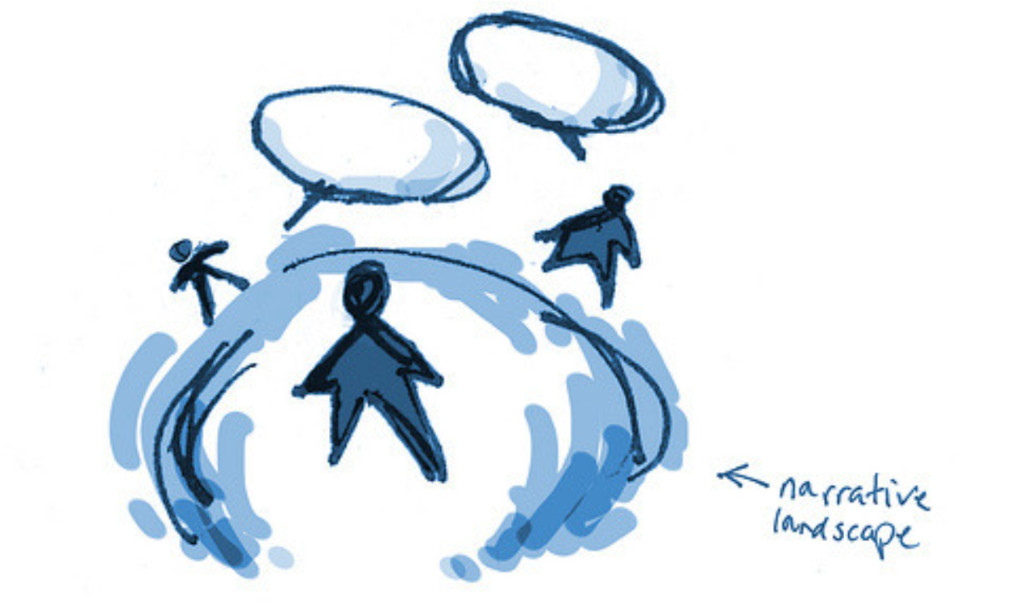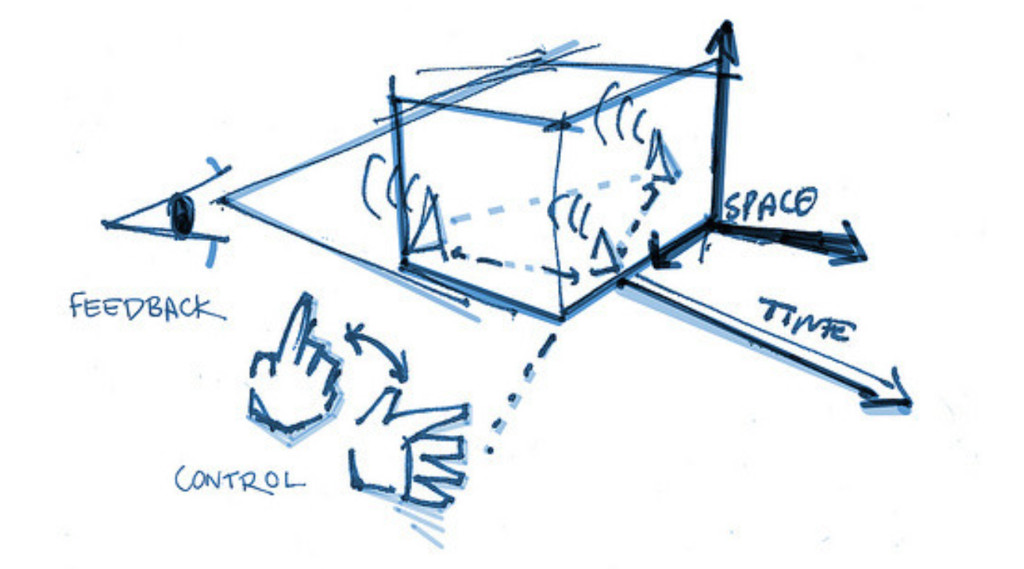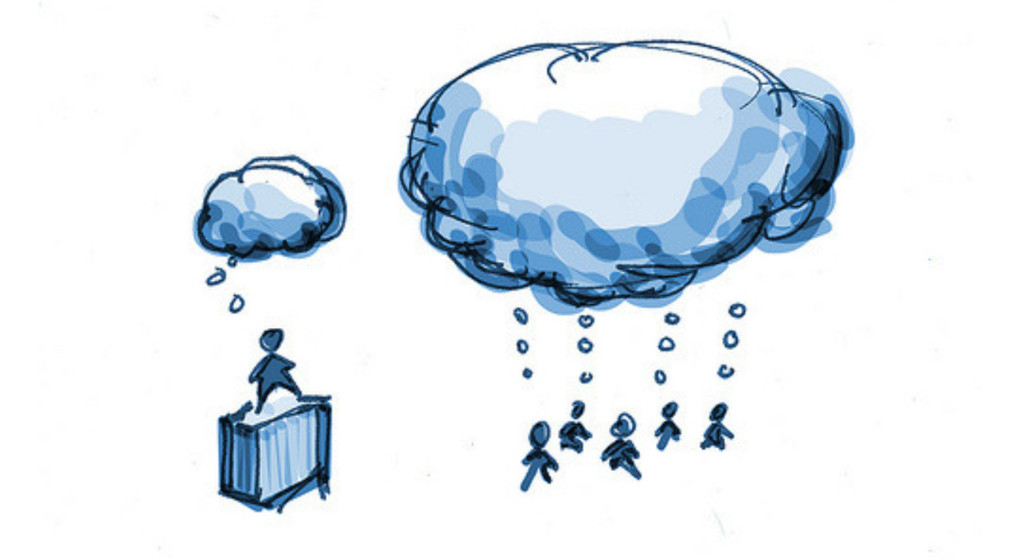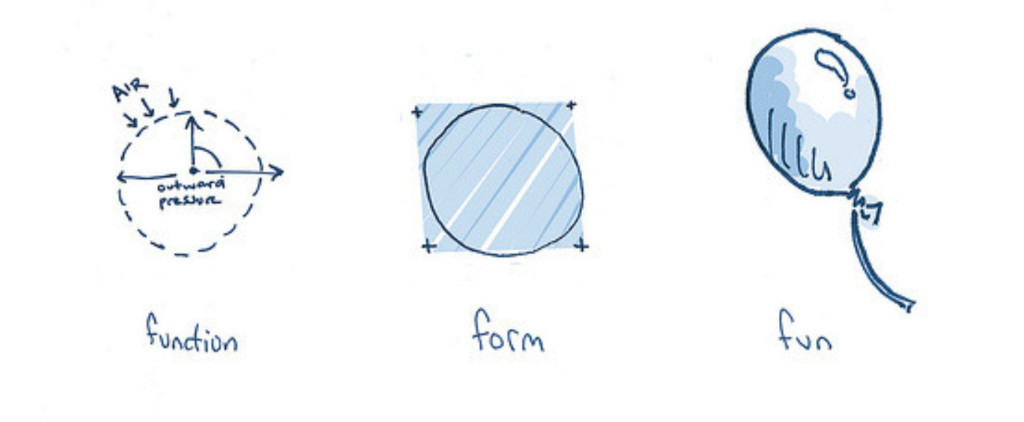Kai Turner
The Future of Information Architecture
From Hypertext to Hypercontext
The article was originally published in the AGIT8 online journal on Jan 25 2009.
It is here republished with the permission of the author as a follow-up to Hobb’s “Re: The Future of Information Architecture”
and as part of ongoing reflections and archival efforts that intend to collect and preserve important contributions to the history of the field and to the framing of contemporary information architecture.
While the article has been preserved in its entirety, notes have been added where necessary to clarify references to 2009 events, people, or technologies that might escape the reader.
Past and Present
The role of the Information Architect is to sit at the nexus of business, audience and technology, and to negotiate the interests, needs and expectations of each group. That is – to communicate a shared understanding that translates the esoteric language of an organisation’s inner workings into the common parlance of everyday people. This dialogue is mediated by the capabilities (and constraints) of the technology platform that serves as the interface between the two.
Our role, to some, has become synonymous with the tools of the trade: wireframes, diagrammes, blueprints, and sitemaps – our artefacts. However, the skill involved in “map-making” is only at the periphery of what we do. These residuals are simply the representation of a concept. The real skill is in the activities leading up to these concrete objects, and in our ability as “sense-makers.”
We make sense of what our clients want to build, or create.
We help our clients describe their own mental model of how they envisage an interactive service, and we match that with the “design image” of that service – that is, how people will actually perceive it, once it’s built.
Our tools allow us to articulate this model, in ever increasing detail, and to continually test it with the audience to ensure that model and image are aligned. Intention meets perception.
I belabour this point, because the future trends I will describe in this article will point toward the obsolescence of our current tools. So if the role and the tools of the Information Architect become conflated in the minds of our clients, our role too could become an outdated artefact of the Web 2.0 era.
The Future
There are five trends that I believe will have such a great impact on the industry that we’ll find it necessary to redefine the practice:
- Web of conversation – Narratives replace navigation
- Hyperlocal awareness – an API into the real world
- Internet of things – the environment is the platform
- Omniscience of crowds – the dissolution of expert authority
- Fun follows Function – architects of delightful experiences
I’ve deliberately left the “semantic web” off of the list. I see the semantic web as a machine problem, not a people problem. If we stay focussed on creating innovative, useful and usable services – I believe the semantic layer will emerge as a consequence.
Trend #1 – Web of Conversation

The points originally outlined in The Cluetrain Manifesto [1] are just starting to manifest themselves through “Web 2.0” innovations and social media services. The authors pointed to the breaking of the fourth wall in media communications. They described markets as conversations, and how consumers would turn away from “one-to-many” messages preferring instead personal, “one-on-one” dialogues.
So how do you model a conversation? The current tools of the Information Architect are inadequate. At present, one of our tools is to create pen-portraits or personas to represent market segments and audience groups – to create a human face for the underlying demographic data or ethnographic research. However, just as you wouldn’t sound very interesting at a dinner party if you’d prepared six or seven scripts to address different categories of people you might meet – creating personas for audience segments will not work in the medium of conversation.
In thinking about these issues, I continually find myself returning to the work of Christopher Alexander for inspiration. In his definition of “pattern languages” as applied to the architecture of buildings, he wrote:
A pattern language is a system which allows its users to create an infinite variety of those three dimensional combinations of patterns which we call buildings, gardens and towns. (The Timeless Way of Building, 1979)
If you replace “three dimensional” with “online” and “buildings, gardens and towns” with “digital experiences,” it holds true for Information Architecture as well.
What better way to model conversations than to use a language? It’s appropriate to think of our designing a language, rather than a system, because a language is meant to be used, adopted, and “made your own” as a uniquely individual form of self-expression – which is the basis of an authentic conversation.
How do you develop and communicate a language? By using a narrative. The role of the Information Architect will be to find the right narrative, one that then can be easily retold. To find this narrative, the starting point must be an essential human truth, expressing, at its heart, a fundamental need, want or desire that resonates emotion with anyone and everyone.
Once found, that universal truth will allow any person, from any demographic segment, to make the narrative her own.
Trend #2 – Hyperlocal Awareness

FireEagle, Dopplr, BrightKite, Google Maps, location-aware mobiles – these are just some of the services and devices that are seamlessly integrating geolocation into their offering. Soon, we will be able to take for granted that we can determine the location of anyone when they are online.
The Flatland [2] of the internet is now being wrapped around and layered upon the real world.
Web 2.0 is about mash-ups – using the web service-to-service interfaces (APIs) for pulling and remixing information from one online coordinate and plugging it in to another, to create a third, hybrid service. With the emergence of hyperlocal awareness, we’ll be able to pull this information from the real world itself. It becomes an API into the real world.
For instance, do you want to know what type of music is playing in one of the Kavarnas in Prague? You can already do this today. Given the right incentive, you might convince PragueBob [3] or another Prague local from the Twitter community, to go there and tell you. However, as the technology evolves, you won’t need to incentivise anyone. The data will be readily available from any number of sources. For instance, maybe I allow a programme like Shazam (FN: Shazam is a service that can identify music, movies, and tv programs based on samples played to its mobile app. http://www.shazam.com/) to run continually in the background on my mobile phone. It identifies each song it overhears and then geotags and uploads it to the server where anyone can access that information feed.
For the Information Architect this means that where we would once design a service for a platform (i.e. a computer, a mobile device, a television) – now we must take into account platform and setting. Both the what and where of an activity are now relevant.
Trend #3 – Internet of Things

If hyperlocal awareness means that there will be a constant stream of information flowing inward from our surrounding environment, the devices we use – our means of interacting with the internet, will dissolve outwardly onto our surroundings. The environment is the platform.
In the language of Human-Computer Interaction (HCI), the Information Architect would model the interaction between the “system” and the “user”. However, the system is now the whole of the surrounding environment, so we will need a new language and set of tools to model environmental interactive behaviours.
We will need to understand multimodal interaction that includes gestures, positioning and proximity. We will have to redefine our understanding of feedback and display mechanisms. What was once a computer screen, will become an entire digital ecosystem of devices able to communicate information in a multitude of ways – providing visual, auditory and/or tactile feedback.
The role of the Information Architect, just as it was to write the narrative, will also be to act as the stage director in this theatre of interaction. For instance, you could change the mood lighting to reflect an alert in the stock market.
The challenge will be to apply the core skill of being a “sense-maker” to the exponentially growing tide of data available to anyone at any time, and to translate the raw data into a rich, multilayered and meaningful experience that will be able to communicate far more information than text or images alone ever could.
Trend #4 – Omniscience of Crowds

The concept put forward in James Surowiecki’s “The Wisdom of Crowds” is that the aggregate knowledge of “the many” will outperform the ability of the expert “few”. The popular term for the wisdom of crowds in action is crowdsourcing, with Wikipedia as its most visible example.
I’m suggesting that this concept will be pushed even further. Crowdsourcing implies that an organisation delegates the solving of a particular problem to the online population. With the Omniscience of Crowds, this power dynamic will shift. Rather than the authority residing with the business or organisation, the power and authority resides with the customer or audience.
Businesses, and the Information Architect, will need to assume that they are not the most informed or expert when compared to the whole of their audience. This means the dissolution of expert authority.
In practical terms, this means a shift from selling or marketing to customers, to listening and responding to them. And understanding that, collectively, your customers will change your business operations.
The Information Architect (and this may actually become a specialised field within Information Architecture) will need to move beyond understanding the goals and objectives of a business to understanding business operations and logistics.
The audience, the crowd, en masse will behave like a giant organism – changing and adapting while seeking out efficiencies in terms of price, time and customisation. Companies that cannot change their processes equally as quickly will be made obsolete by “micro-providers” who can do something small, and singularly focussed.
The Information Architect will need to sell tools to the client that facilitate organisational change, rather than selling complete solutions that will need to be redesigned and redeveloped in cycles.
Trend #5 – Fun Follows Function

Given the evolutionary nature and competitive climate of the web, the internet will selectively breed the best – in terms of form and function – for all the different types of online behaviours. This would eventually happen even if information architects weren’t involved at all. Of course, no business can be run by trial and error, and so we do have a role in the current market.
Still, the trend suggests that we will soon have a comprehensive library of design patterns to cover nearly every mode of online behaviour.
So where does that leave the Information Architect? If the patterns work, then you won’t need a senior practitioner to apply the rules – that is the role of a junior draughtsman. However, maturity and ability of an artisan will still be required to craft delightful experiences.
As with other forms of narrative, there exist tropes – or rules that define the basic structure of a particular narrative. But routinely following a set of instructions is not likely to result in the next award-winning film any more than applying patterns will result in a delightful experience. We will need to become the Architects of Delightful Experiences.
From Hypertext to Hypercontext
All of these trends are based on people having access to information and a heightened awareness about the world – trends that enrich the context of their lives. The context around people, and the understanding gained through conversations (Web of Conversation), or gleaned from their collective wisdom and expertise (Omniscience of Crowds). It is the context around physical, real objects (Internet of Things) and the world they and we inhabit (Hyperlocal Awareness). Finally, it is about how we, as curious human beings, explore this world of richly contextualised experiences – quite simply by being playful and seeking out things that give us delight (Fun follows Function)
For the future of Information Architecture, it is a change from the design of hypertext, as in the interactive design of objects on a device or webpage – to the design of hypercontext, which is the interaction of the objects we perceive in the world around us.
And an exciting future it is.
References
- Surowiecki, J. (2005) The Wisdom of Crowds. Abacus.
Footnotes
[1] The Cluetrain Manifesto. http://www.cluetrain.com/.
[2] Abbott, E. A. (1884) Flatland: A Romance of Many Dimensions. Downloadable at https://gutenberg.org/ebooks/97.
[3] As of July 2022, the Twitter account for PragueBob (http://twitter.com/praguebob) is active but reports zero tweets.


